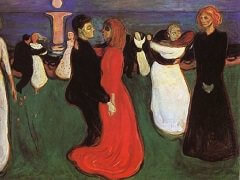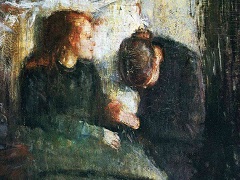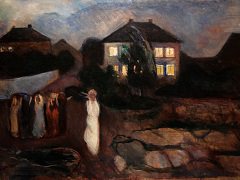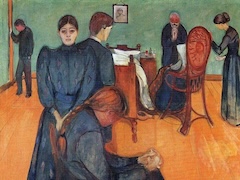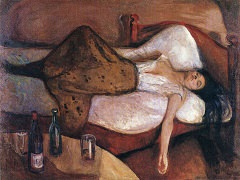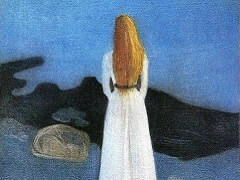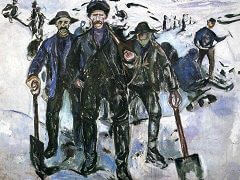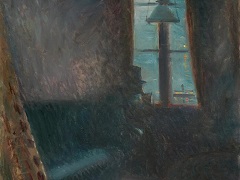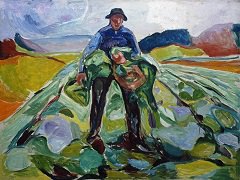The Day After, 1894-95 by Edvard Munch

When Jens Thiis bought this picture for the National Gallery, Oslo, in 1909 the public was shocked; one critic denounced it as portraying a drunken prostitute. This is unlikely to have been Munch's idea. He did paint several pictures of prostitutes, tending to depict them as unattractive or even grotesque, whereas this woman closely resembles the Madonna and, different though the setting, shares her ethereal beauty. She is probably intended to illustrate one aspect of the essence of protean womanhood portrayed in that work. Both paintings in fact relate to a lost picture by Munch that Hans Jaeger had with him in his prison cell when jailed in 1886 for publishing From Christiania's Bohemia, a novel in which descriptions of free bohemian life parallel what is shown here. The present picture is more directly a replica, modified by his style of the 1890s, of the same subject painted in 1885-86 and also lost. One important Norwegian precedent for the depiction of a dissolute woman would undoubtedly have been known to Munch, Hans Heyerdahl's tiny, exquisite painting of The Champagne Girl, which was also strongly attacked when exhibited. If Munch's picture represents The Day After, Heyerdahl's might be called 'The Evening Before.'
Until his late years Munch never showed any interest in still-life painting for its own sake, but he sometimes introduced it into subject pictures, giving it, as in this case, the status of a separate image, a material correlate of the human situation portrayed. Gauguin had employed still life in a similar manner in some of his portraits, without giving it the same degree of independence. In The Day After the differing pairs of bottles and glasses hint that the woman has had a nocturnal visitor.



